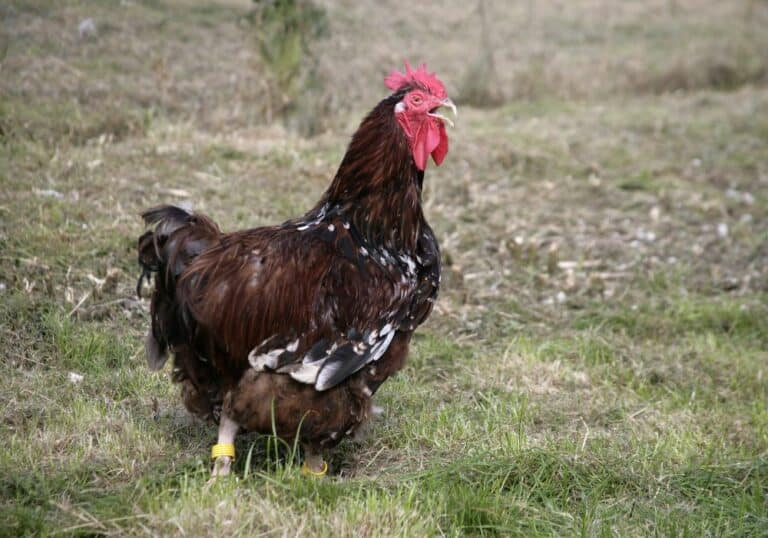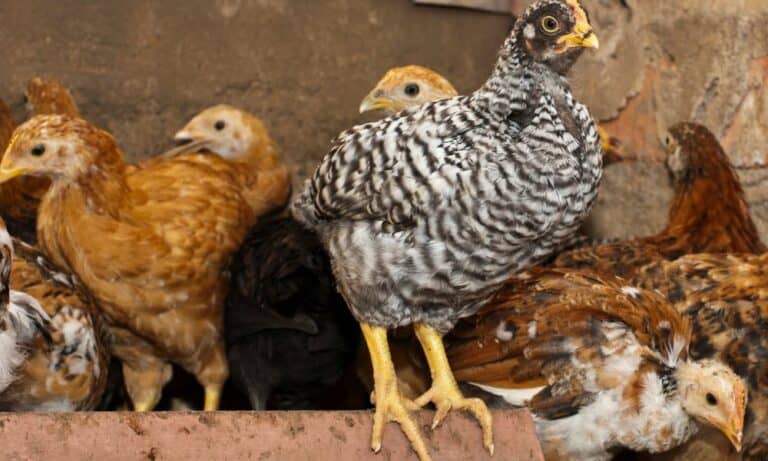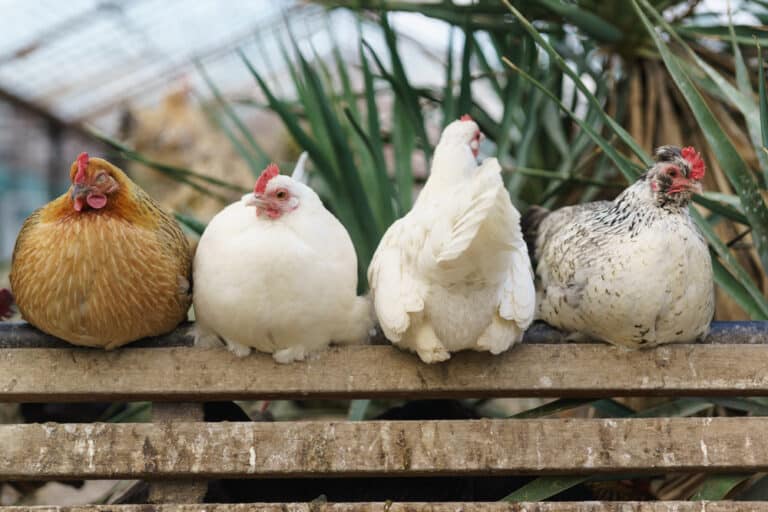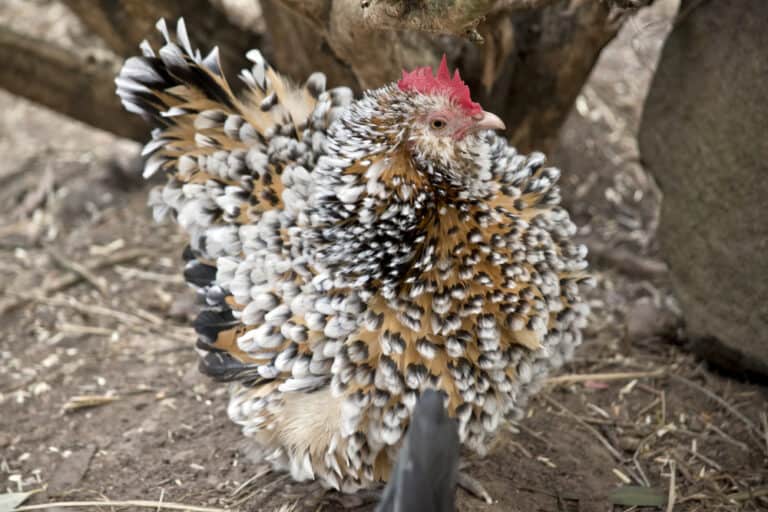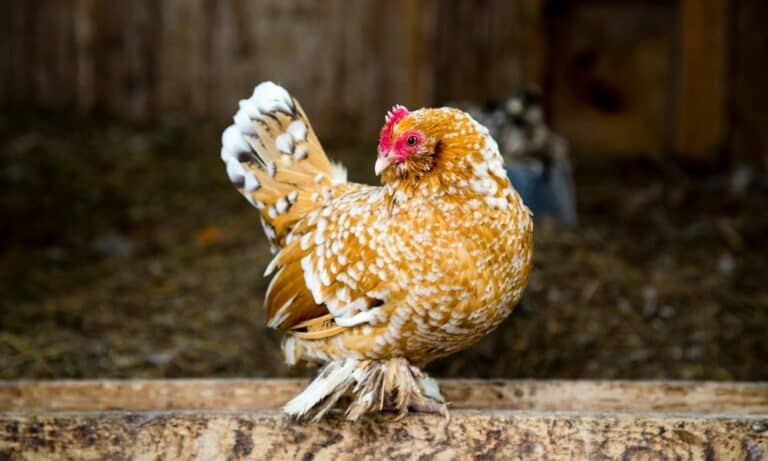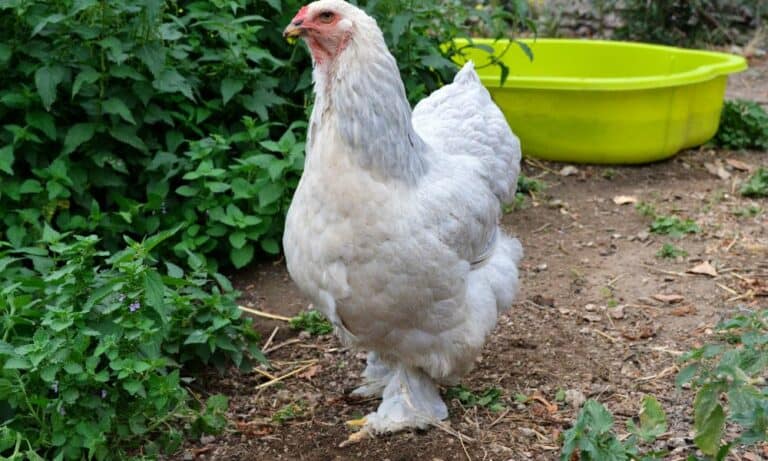Are you looking forward to a thrilling free-range or homesteading adventure in poultry farming? Relax; let us introduce you to an incredible chicken breed- Rhodebar chicken.
With its enticing charm and low-maintenance personality, this breed is an ideal companion for novice poultry keepers. But hang on tight because there’s a lot more to these adorable birds than meets the eye!
Peaceful, gentle, and beautiful, Rhodebars make good companions for families with kids and add glamour to any backyard. On top of that, you get to enjoy delectable eggs and juicy meat.
Today, we will usher you into the world of Rhodebar chicken. So, prepare yourself to embark on a journey that will transform your poultry farming experience.
Origin of Rhodebar Chickens
The Rhodebar is a rare chicken breed that traces its origin to the United Kingdom. Created in the early 1940s, this breed combines both beauty and utility.
Initially, the breed was named Rebar, but it received a more suitable–Rhodebar. And here’s the kicker:
Even at a day old, Rhodebar baby chicks are different. You can easily tell between male chicks and female chicks. But before we get into Rhodebar chicks, we would like to share a story about genetic engineering.
The Rhodebar was created by brilliant minds who wanted to combine the remarkable auto-sexing abilities of the Golden Brussbar cockerel with the exceptional egg-laying abilities of the Barred Plymouth Rock hen.
The result was a dual-purpose autosexing breed that gained popularity among farmers and poultry enthusiasts. Although Rhodebar never stood a chance as a show breed. It still received the prestigious stamp of approval from the Poultry Club of Britain in 1952.
But the story does not end here. Rhodebar’s allure appears to have spread far beyond the UK. In fact, breeders from across the world tried recreating this creation.
In 1947, the University of British Columbia developed another version of the Rhodebar with characteristics of the Danish strain of the Rhode Island Red. Sadly, the breeding attempt resulted in only a one-day-old chick out of five possessing the coveted sexing gene.
Rhodebar Chicken: Physical Characteristics

Like most auto-sexing breeds, Rhodebar hens and roosters have several distinguishing features.
As chicks, the females proudly display dark stripes down their backs, while the males flaunt vibrant shades of yellow.
Consider this: when these adorable creatures mature, they resemble their Rhode Island Red counterparts. The color and shape are the same as the traditional chickens we know and love, with a slight variation.
As they say, the devil is in the details! While the Rhode Island Red has black-tipped tails, our Rhodebar friends have tails with various colors, like light brown, white, and black. It’s like adding artistic flair to an already captivating canvas.
Males
- Plumage: A stunning deep red beauty with beautiful barring.
- Barring: Their bodies are adorned with narrow stripes.
- Tails: Majestically upturned and adorned in a dazzling array of colors ranging from light brown to white and black.
- Standard Weight: A standard Rhodebar cock weighs a minimum of 8.5 lbs (3.85kg), while the bantam version cockerel weighs 2.4 lbs (1.08kg) of pure charm.
- Body type: Broad, with long backs and full, seductive breasts.
- Face: A red vision with eyes that glow red or orange.
- Combs, wattles, and earlobes: The roosters have single, upright combs that are stunning, round wattles with bright red coloration. The bright red color also applies to their earlobes.
- Beak: Short and bright yellow beak.
- Legs and feet: They have brilliant yellow legs and feet coupled with four graceful toes.
Females
- Plumage: Deep red splendor adorned with enchanting grayish barring.
- Barring: The narrow stripes adorn the upper body, while the black barring, proudly longer than its gray counterpart, takes center stage.
- Tails: Their tails are more petite but not in beauty. They have a mesmerizing blend of black and white coloration.
- Weight: A standard hen weighs 64 lbs (2.9kg), while the bantam version weighs 1.74 lbs (0.79kg). As for pullets, they have a minimum weight of 5.5 kg.
- Body type: Delicately broad, with backs that exude grace and fullness with each step.
- Face: Their eyes captivate with clearly defined pupils, radiating a mesmerizing shade of red.
- Combs, wattles, and earlobes: Rounded wattles complement their single, upright comb. The combs, wattles, and earlobes rock a bright red color.
- Beak: It is short and bright yellow.
- Legs and feet: A brilliant yellow vision that completes their enchantment.
Rhodebar Chicken: Temperament and Behavior

Besides their stunning appearance, Rhodebar chickens have a calm and more docile nature. But this holds for hens only. The males often display aggressive tendencies towards weaker chicken breeds like Cochins.
Despite this, Rhodebar roosters make good friends and form strong bonds with their owners. Of course, you have to treat them right to earn their trust and prevent aggressive behaviors.
And the interesting part:
Rhodebar chickens are excellent foragers. They love to explore their environment while looking for bugs, grit, worms, and other food nature offers. While they may be curious, they will not damage your plants and vegetable in the garden.
As for hardiness, they can thrive in warm and cold climates. But in extreme weather, you might need to provide them shelter to prevent cold or heat stress.
Rhodebar Chicken Egg Laying Capabilities
The Rhodebar hen is an excellent egg layer, producing around 180-250 light brown eggs annually. They can lay approximately 200 eggs during their first laying period – usually at six months.
Rhodebar hens are also known to lay large eggs, making them useful not only for home but also for business purposes. Also, the eggs boast excellent quality–imagine flavor-rich yolks and egg whites that elevate your omelet creation.
Even in the dead of winter, these hardy chickens can grace you with eggs. However, the number of eggs produced during this period may decrease, but the quality will remain the same as long as the chicken is in excellent health.
But how do you deal with low eggs laying season in Rhodebar chickens?
Well, when you notice a decrease in egg production, it’s time to add a new line to your strain. You can do this by mating your Rhodebar rooster with some high-quality Rhode Island Red hens.
By doing so, you will get pure hens, but the males will not be pure. Next, mate your Rhodebar cockerels with the pure hens to get a pure line of Rhodebar hens, with amazing egg-laying abilities.
Alternatively, you can introduce a new set of Rhodebar pullets to your flock. It also helps to ensure your birds receive a balanced diet and live in a stress-free environment. These factors also affect egg production.
Rhodebar Chickens: Diseases and Parasites

Like many chicken breeds, Rhodebars are prone to several diseases and parasites. As a responsible chicken owner, you must be aware of these potential health issues. This way, you can take proactive measures to address and prevent them.
Below, we’ve discussed a few common diseases and parasites Rhodebar chickens might encounter.
Diseases
1. Respiratory Infections
Rhodebar chickens are susceptible to various respiratory infections, like Infectious Coryza, Avian Influenza, fowl pox, and Mycoplasma gallisepticum (MG).
Whether infected by a viral or bacterial respiratory infection, the chickens will display the following signs and symptoms.
- Coughing
- Gasping
- Sneezing
- Nasal discharge
- Retarred growth
- Conjunctivitis
- Reduced egg production
If you observe these symptoms in your flock, quarantine the infected birds and consult a veterinarian immediately.
2. Prolapsed Vent
A prolapsed vent, prolapsed oviduct, or blowout is a common disease in prolific egg layers like Rhodebar hens.
It occurs when the cloaca (the opening of the digestive, reproduction, and urinary tract) protrudes from the hen’s body. The protruding cloaca appears red, swollen, and bulging outside. Your bird might also display signs of agitation or pain.
A prolapsed vent occurs due to several factors, including:
- Diabetes
- Nutritional imbalances
- Genetic predisposition
- Underlying health issue
- Straining during egg-laying
Fortunately, the condition is treatable if identified earlier.
Parasites
1. Chicken Lice
Chicken lice can affect Rhodebar chickens, just like other chicken breeds. Small and wingless, these invasive parasites infest the feathers and skin of chickens, sucking their blood and laying eggs.
If left untreated, chicken lice can cause discomfort and several health problems. Here’s a list of signs and symptoms of lice infestation in Rhodebar chickens:
- Frequent scratching and preening
- Feather pecking
- Irritated skin
- Discomfort and depression
- Decreases appetite, egg production, and activity
- Pale combs and wattles
- Dried up blood
- Wound scabs
The best way to handle chicken lice is to isolate the infected chicken from the rest of the crowd. Next, clean the henhouse, removing bedding, dropping, and other debris that provides the lice a good hiding spot.
Treat the infected chicken with a safe-lice treatment. Contact your local veterinarian for the right treatment. Also, follow the instruction provided by the product manufacturer. Repeat the process until you eliminate all the lice.
2. Fowl Mites
Like chicken mites, fowl mites feed on your bird’s blood, causing great discomfort and other health issues. These parasites usually look like tiny red or black dots on crevices, cracks, and beddings in the coop.
Chickens infected with fowl mites will display several clinical symptoms, including:
- Pale combs and wattles
- Reduced activity
- General weakness
- Intense itching and irritation
- Lack of appetite
You can address these parasites by isolating and treating the infected birds and thoroughly cleaning the coop. After that, apply treatment to the coop and nesting areas.
Tips to Care for Rhodebar Chickens
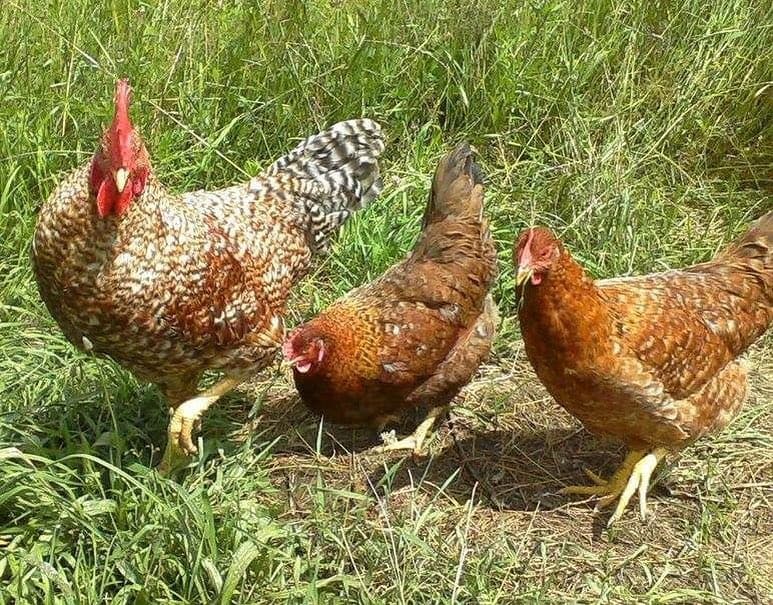
Build a comfortable chicken coop that is large, well-ventilated, and predator-proof. Also, remember to provide plenty of nesting boxes for their egg-laying convenience.
Give your Rhodebars balanced meals that meet their nutrition requirement. In addition, ensure they have vitamins and minerals; supplement their diet with fresh greens, fruits, and vegetables.
Rhodebars enjoy luxurious dust baths to keep their feathers clean and pest-free. So, create an area in their coop for them to frolic and pamper themselves with fine sand or dust. It’s like a chicken spa!
Check the condition of your Rhodebars regularly. Examine your pet for signs of illness, such as lethargy or unusual behavior, and consult a veterinarian if necessary.
Conclusion
That’s it! We have come to the end of our piece. As you see, the Rhodebar chicken breed is truly remarkable.
The Rhodebar offers owners a perfect blend of beauty, utility, and charm. Its stunning appearance, delightful personality, and egg-laying capabilities make them a perfect choice for seasoned poultry owners and beginners.
But it’s not just about the eggs and aesthetic appeal. These birds bring a sense of liveness to your home and offer great companionship to you and your family.
So, what are you waiting for? Make Rhodebar a part of your chicken-raising adventure today!

